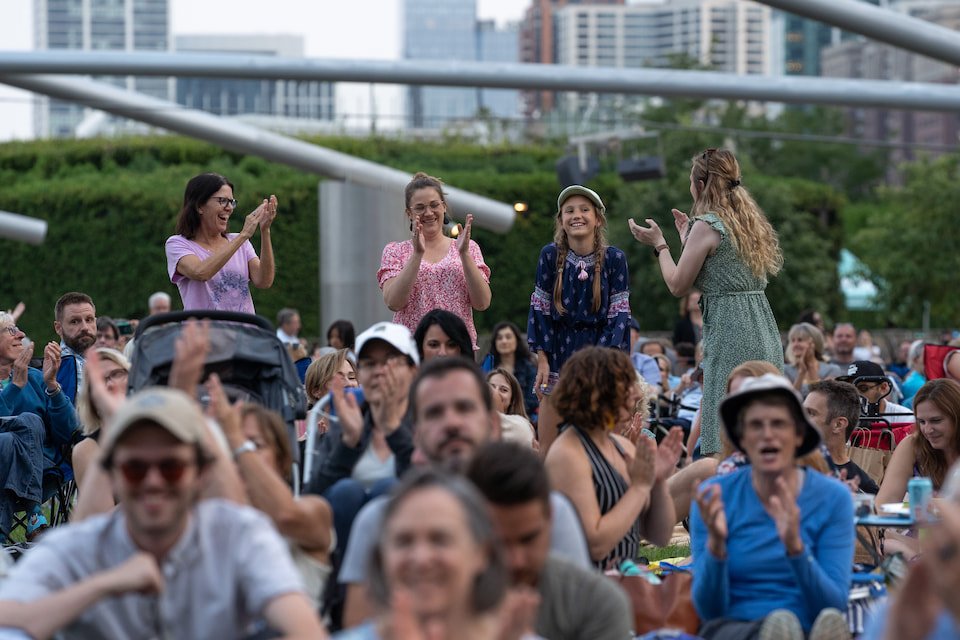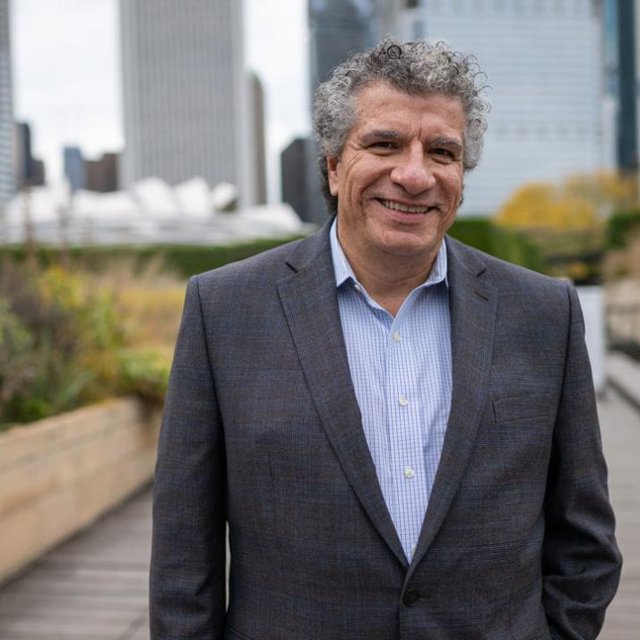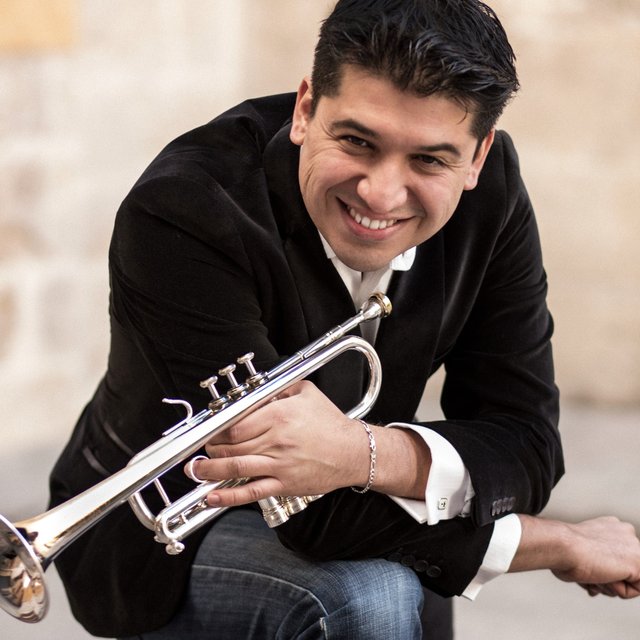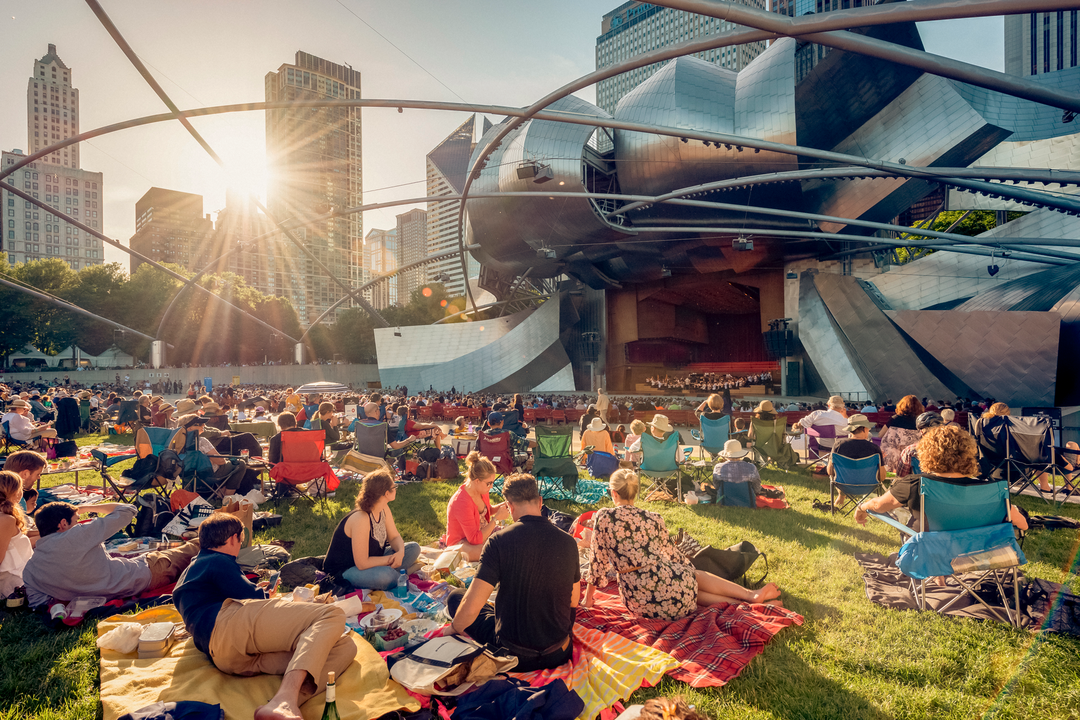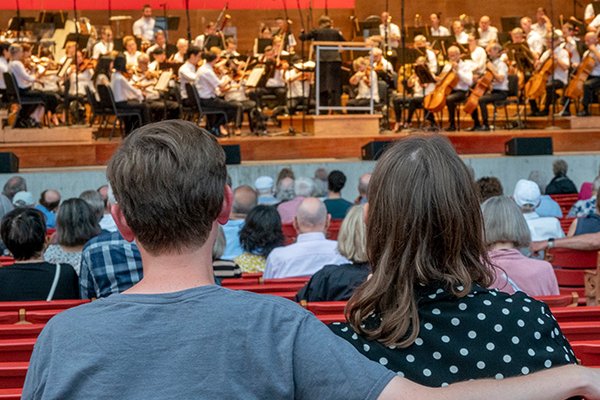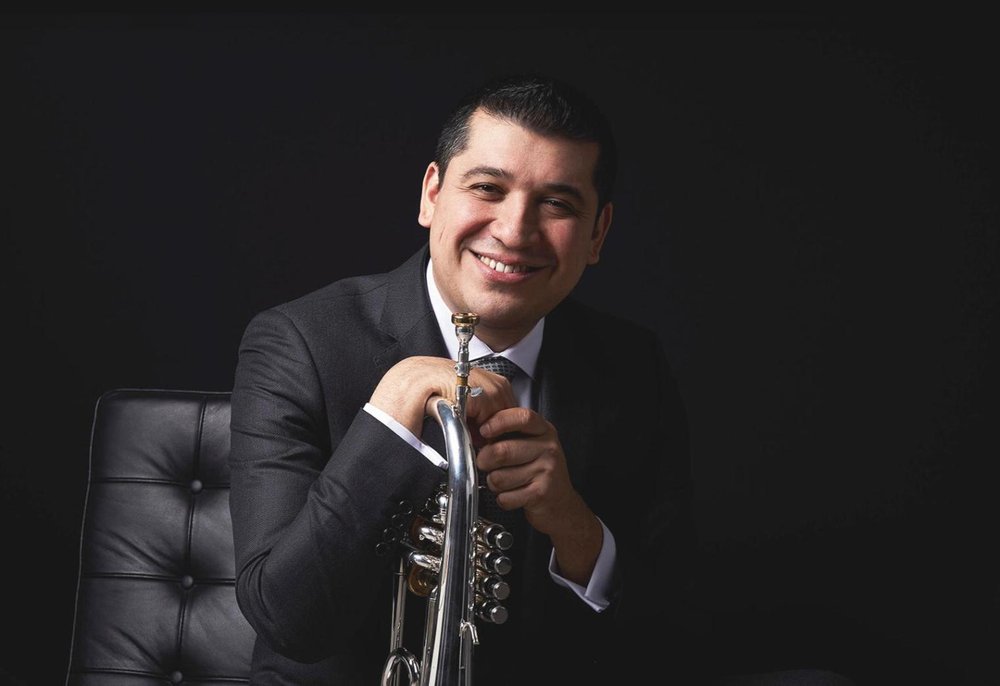
Mahler Symphony No. 1
Program
Clarice Assad Baião N’ Blues (9 mins)
Pacho Flores Morocota (5 mins)
Arturo Márquez Concierto de Otoño (20 mins)
Son de luz
Balada de floripondios
Conga de flores
Intermission (20 mins)
Gustav Mahler Symphony No. 1, Titan (60 mins)
Langsam schleppend
Blumine
Kräftig bewegt
Feierlich und gemessen
Stürmisch bewegt
Featuring
Program Notes
Clarice Assad (b. 1978)
Baião N’ Blues (2023)
Scored for: two flutes, two oboes, two clarinets, two bassoons, four French horns, three trumpets, three trombones, tuba, timpani, percussion, and strings
Performance time: 9 minutes
First Grant Park Orchestra performance
Born in Rio de Janeiro, Clarice Assad is one of the most widely performed Brazilian concert music composers of her generation. No stranger to Chicago, she earned her bachelor’s from Chicago College of Performing Arts at Roosevelt University. She has since received numerous awards and honors, and her works have been commissioned, performed, and recorded by prominent artists and ensembles worldwide.
Assad was commissioned to write Baião N’ Blues by radio station KMFA, Classical 89.5 in Austin, Texas, for its 2023 Draylen Mason Composer-in-Residence initiative. The work celebrates the fusion of her Brazilian and American musical worlds, juxtaposing lively Brazilian rhythms with the soulfulness of American blues. Baião is a genre of music that originates from Northeastern Brazil. It is characterized by a syncopated duple-meter rhythm played by a bass drum called a zabumba, which is played with both a mallet and a stick to achieve low and high notes, respectively. It is often accompanied by keyboard accordion and triangle. Assad writes in her program note for the piece, “Throughout the orchestral journey, a sense of lightness and humor permeates the musical landscape, inviting the audience to engage in a spirited dialogue.” She continues, “Baião N’ Blues showcases the power of music to transcend cultural boundaries and connect people through the art of listening.”
Pacho Flores (b. 1981)
Morocota (2019)
Scored for: strings and solo trumpet
Performance time: 5 minutes
First Grant Park Orchestra performance
Trumpet virtuoso and composer Pacho Flores originally wrote Morocota for trumpet and guitar. The piece first appeared on his 2017 album Entropía, recorded with guitarist and cuatrista Jesús “Pingüino” González. Tonight’s performance features Pacho’s orchestral arrangement, which was later included on his 2022 album, Estirpe. In an interview with KPBS San Diego, Flores described the piece as follows: “Morocota is a waltz, and I dedicate it to my mother. The style for this piece is from my town, San Cristobal in los Andes in Venezuela.” The short, charming work reflects Flores’s passion for blending the folk and popular music traditions of his native Venezuela with classical forms. He cites his father as a guiding force in this approach: “My father told me when I was a child this sentence: ‘Pacho, the music doesn’t have borders.’ For him, the music is music. You can play Piazzola or Tchaikovsky, and you have to play with the most beautiful sound and dignity—every style.”
Arturo Márquez (b. 1950)
Concierto de Otoño (2018)
Scored for: two flutes including piccolo, two oboes, two clarinets, two bassoons, four French horns, three trumpets, three trombones, tuba, timpani, percussion, strings, and solo trumpet
Performance time: 20 minutes
First Grant Park Orchestra performance
“The trumpet is the queen in the heart of Mexico,” said Mexican composer Arturo Márquez. “We find it in practically every form of popular musical expression; it is the Mexican cry of joy and of sorrow. It is also foundational in Latin American concert music, and my Concierto de Otoño is a compilation of all those feelings, colors, and consolations.”
Márquez, best known for Danzón No. 2, made popular worldwide by Gustavo Dudamel and the Simón Bolívar Symphony Orchestra of Venezuela, wrote Concierto de Otoño for another Venezuelan musician and graduate of El Sistema, trumpeter Pacho Flores, heard here on this program. In an effort to expand the solo trumpet repertoire, Flores has spearheaded a series of commissions from leading composers. Written in 2018, Concierto de Otoño (Autumn Concerto) mixes Latin styles within the traditional structure of the classical concerto. In addition to the work’s technical demands, requiring mastery of both classical and popular styles, the soloist must play four different instruments across the concerto: a trumpet in C, flugelhorn, soprano cornet in F, and trumpet in D.
The first movement, “Son de luz,” presents a dramatic dialogue between the soloist and the orchestra in the form of an Afro-Cuban dance (the “son” here being a Cuban genre of music and dance). The second movement, “Balada de floripondios,” is a love song in tribute to “el amor brujo,” or “love, the magician.” The floripondio is both a flower that resembles the bell of a trumpet as well as a euphemism for an extravagant person or gesture, while “el amor brujo” could refer to a ballet by Spanish composer Manuel de Falla of that name. Drawing inspiration from the baroque Chaconne, the movement proceeds as a set of continuous variations on a theme. The brilliantly virtuosic finale, “Conga de flores,” offers up another Cuban dance and space for an improvised cadenza within classical rondo form.
Gustav Mahler (1860–1911)
Symphony No. 1 in D major, Titan (1884)
Scored for: four flutes including piccolo, four oboes including English Horn, four clarinets including bass clarinet, three bassoons including contrabassoon, seven French horns, four trumpets, three trombones, tuba, timpani, percussion, harp, and strings
Performance time: 61 minutes
First Grant Park Orchestra performance: August 15, 1966; Irwin Hoffman, conductor
While on a walk with Sigmund Freud in 1910, Gustav Mahler shared an anecdote that reveals a lot about how his distinctive compositional style came to be. Mahler’s childhood was turbulent—his father abused his mother, and eight of his thirteen siblings died in infancy. One day, as his father was beating his mother, the six-year-old Mahler ran from the house, crashing headlong into an organ grinder playing a popular folksong. This stark juxtaposition of the tragic and the frivolous stuck with Mahler and came to characterize much of his music. Nowhere is that more apparent than in his Symphony No. 1.
The history of Mahler’s first symphony is long and complicated. Although he wrote most of the symphony in early 1888, it incorporates earlier musical material, most notably his 1884 song cycle Lieder eines fahrenden Gesellen (Songs of a Wayfarer). For the symphony’s premiere in Budapest in 1889, Mahler titled the work “Symphonic Poem in Two Parts.” Given this label, the audience expected the work to be programmatic, that is, conveying some kind of story or image. However, Mahler did not provide them with a program or detailed descriptions of the movements. This decision contributed to the symphony’s overwhelmingly poor reception, as the audience struggled to follow Mahler’s idiosyncratic style and thought the work an offensive parody.
Mahler continued to revise the piece over the following decade. For the next performance in Hamburg in 1893, Mahler changed the title to “Titan: A Tone Poem in Symphonic Form” and, at his friends’ insistence, provided the audience with an extensive literary program. By 1900, he had backpedaled on this decision and rejected any program or title besides “Symphony in D,” saying that programs often misled audiences and were “anti-musical.” He had also cut an entire movement (“Blumine,” restored in this performance) and made other edits in orchestration as he gained more conducting experience.
Despite his later renunciation of programmatic readings, there are undeniable literary and artistic influences behind Mahler’s Symphony No. 1. For instance, the inscription “Titan” came not from Greek mythology but from a novel by one of Mahler’s favorite authors, Jean Paul. Other references include Dante Alighieri’s Inferno (the finale was once titled “Dall’inferno al paradiso”) and artist Moritz von Schwind’s The Hunter’s Funeral Procession. Depicting forest animals carrying a hunter’s coffin, this woodblock inspired the ironic funeral procession of the fourth movement.
The biggest clues to any underlying program come in the work’s extensive quotations from Songs of a Wayfarer. The main theme of the first movement derives from the second song of the cycle, “Ging heut’ Morgen über’s Feld” (“I Went this Morning over the Field”). In the song, the wayfarer marvels at the beauty of nature as it awakens from its winter slumber. But amid this splendor, he despairs: “Will my happiness really begin now? No! The kind I mean can never blossom in me!” This quotation sums up the symphony’s emotional trajectory: the spring of the first three movements gives way to the death of the protagonist’s illusions and finally his acceptance and spiritual triumph.
The first movement opens with a unison A across seven octaves in the strings. From this eerie stillness emerge distant fanfares, cuckoo calls and other nature sounds, and eventually the melody from Songs of a Wayfarer. The second movement, “Blumine,” which Mahler excised in 1896, has been reinstated for tonight’s performance. While some early critics denounced it as trivial, it provides a delicate palate-cleanser after the exuberant end of the first movement. Next, the scherzo alternates a rustic waltz with a more genteel Austrian Ländler in the trio section. This relatively straightforward scherzo was the only movement that found consistent favor among initial audiences.
The same cannot be said of the fourth movement, which casts the children’s round “Frère Jacques” as a grotesque funeral procession in minor, accompanied by Bohemian street musicians. In the middle of the movement comes another quote from Songs of a Wayfarer, specifically the final verse of the fourth song, “Die zwei blauen Augen von meinem Schatz” (“The Two Blue Eyes of my Beloved”). Here, the wayfarer finds solace from his lovesickness under a linden tree, concluding, “Everything was good again. Everything: love and grief, and world and dream!” Again, the poignancy of this music is set in stark contrast to what surrounds it. After a cymbal crash, the finale emerges like a lightning bolt from a dark cloud. The movement transforms musical material from the first movement in a turbulent journey toward D major.
—Katherine Buzard
Event Sponsors
This concert is graciously sponsored by David H. Whitney and Juliana Y. Chyu. Additional support for this program is generously provided as part of the Hanson Community Connections Series.
Artistic Leadership
Support The Festival
Violin I
Jeremy Black, concertmaster
Vacant, assistant concertmaster
Trista Wong
Zulfiya Bashirova
Jennifer Cappelli
Injoo Choi
Dima Dimitrova
Erica Hudson
Hyewon Kim
Matthew Lehmann
Jayna Park
Rika Seko
Karen Sinclair
Bonnie Terry
Krzysztof Zimowski
Violin II
Liba Shacht, principal
Vacant, assistant principal
Ying Chai
Ran Cheng
Karl Davies
Likai He
Ann Lehmann
Laura Miller
Cristina Muresan
Kjersti Nostbakken
Irene Radetzky
Jeanine Wynton
Thomas Yang
Viola
Terri Van Valkinburgh, principal
Yoshihiko Nakano, assistant principal
Elizabeth Breslin
Beatrice Chen
Amy Hess
Rebecca Swan
Chloé Thominet
Cello
Walter Haman, principal
Peter Szczepanek, assistant principal
Calum Cook
Larry Glazier
Steven Houser
Eric Kutz
Eran Meir
Double Bass
Colin Corner, principal
Peter Hatch, assistant principal
Andrew Anderson
Christian Luevano
Samuel Rocklin
Chunyang Wang
Chris White
Flute
Vacant, principal
Alyce Johnson
Jennifer Lawson, assistant principal
Piccolo
Jennifer Lawson
Oboe
Mitchell Kuhn, principal
Vacant
Anne Bach, assistant principal
English Horn
Anne Bach
Clarinet
Dario Brignoli, principal
Trevor O’Riordan, assistant principal
Besnik Abrashi
Bass Clarinet
Besnik Abrashi
Bassoon
Eric Hall, principal
Nicole Haywood Vera Tenorio, assistant principal
Vacant
Contrabassoon
Vacant
Horn
Vacant, principal
Stephanie Blaha, assistant principal
Neil Kimel
Brett Hodge
Paul Clifton
Trumpet
David Gordon, principal
Mike Brozick
Vacant, assistant principal
Vacant
Trombone
Daniel Cloutier, principal
Jeremy Moeller, assistant principal
Bass Trombone
Alexander Mullins
Tuba
Andrew Smith, principal
Timpani
Daniel Karas, principal
Josh Jones, assistant principal
Percussion
Josh Jones, principal
Vacant, assistant principal
Doug Waddell
Harp
Kayo Ishimaru-Fleisher, principal
Keyboards
Christopher Guzman
Orchestra Librarian
Eliza Bangert, principal
Grant Park Chorus
* denotes leave-of-absence † 2025 Vocal Fellow
Laura Lynch Anderson
Kristina Bachrach
Madalynn Baez
Megan E. Bell
Alyssa Bennett
Tamara Bodnar
Kylie Buckham
Anna Joy Buegel
Laura Bumgardner
Katherine Buzard
Bethany Clearfield
Nathalie Colas
Carolyne DalMonte
Megan Fletcher
Kaitlin Foley
Saira Frank
Julia Frodyma
Katherine Gray-Noon
Kimberly Gunderson
Alexandra Ioan
Alexandra Kassouf
Darlene Kelsey
Olivia Knutsen
Marybeth Kurnat
Katelyn Lee
Kyuyim Lee+
Rosalind Lee
Veronica Mak
Hannah Dixon McConnell
Marie McManama
Kathleen Monson
Susan Nelson
Evangeline Ng
Máire O'Brien
Alexandra Olsavsky
Laura Perkett
Angela Presutti Korbitz
Alexia Rivera
Veronica Samiec
Emily Sinclair
Molly Snodgrass
Tiana Sorenson
Christine Steyer
Sarah van der Ploeg*
Lydia Walsh-Rock
Sherry Watkins
Emily Amesquita
Melissa Arning
Christina Bernardoni
Angela Born
Bethany Brewer
Julie DeBoer
Leah Dexter
Katrina Dubbs
Stacy Eckert
Margaret Fox
Catarine Hancock
Ruth Ginelle Heald
Sophia Heinz
Miya Higashiyama
Carla Janzen
Amy Allyssa Johnson
Kathryn Kinjo Duncan
Amanda Koopman
Anna Laurenzo
Jeannette Lee
Thereza Lituma
Chelsea Lyons
Victoria Marshall
Jessica McCarthy
Quinn Middleman
Ella Peters
Sarah Ponder
Emily Price
Stephanie Schoenhofer
Suzanne A. Shields
Marissa Simmons
Cassidy Smith
Aidan Spencer
Alannah Spencer
Margaret Stoltz
Carolyn Sundlof Boudreau
Gabrielle Timofeeva López
Elizabeth Vaughan
Corinne Wallace-Crane
A.J. Wester
Debra Wilder
Isabel Yang+
Charles Anderson
Enrico Giuseppe Bellomo
Justin Berkowitz
Madison Bolt
Hoss Brock
Steven Caldicott Wilson
Opal Clyburn-Miller+
John J. Concepción
Micah Dingler
Jared V. Esguerra
Alec Fore
Ace Gangoso
Klaus Georg
Tejas Gururaja
Paul Hunter
Garrett Johannsen
William Johnson
James Judd
Tim Lambert
Tyler Lee
Stephen D. Noon
Marcos Ochoa
Brett Potts
Nicholas Pulikowski
Peder Reiff
Samuel Rosner
Matthew W. Schlesinger
Joe Shadday
Aaron Short
Brian Skoog
Michael St. Peter
Ryan Townsend Strand
Alan Taylor*
Sean J. Watland
Nate Widelitz
Walter Aldrich
Evan Bravos
Matthew Brennan
Michael Cavalieri
Ryan J. Cox
Ed Frazier Davis
Lifan Deng
Matthew Dexter+
Chris DiMarco
Christopher Filipowicz
Dimitri German
Dominic German
David Govertsen
Spencer Greene
Brian Hupp
Jan Jarvis
Jess Koehn
Eric Miranda
Ian Morris
Ian Murrell
John E. Orduña
Wilbur Pauley
Douglas Peters
Jackson Pierzina
Martin Lowen Poock
Ian Prichard
Dan Richardson
Stephen Richardson
Benjamin D. Rivera
Scott Uddenberg
Schyler Vargas
Vince Wallace
Aaron Wardell
Ronald Watkins
Jonathon Weller
Peter Wesoloski
Jonathan Wilson
Chuck Foster
John Goodwin
Kyuyim Lee
Isabel Yang
Opal Clyburn-Miller
Matthew Dexter
